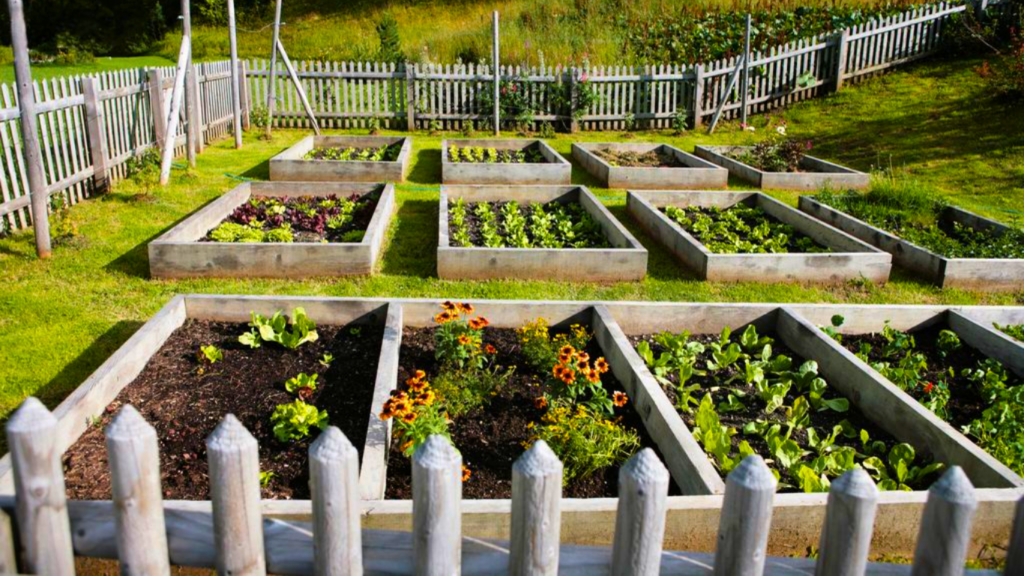I started gardening in Georgia clay soil over 30 years ago. Back then, I had no idea what to plant in Georgia clay soil—I just loved flowers. Soil quality? Supplements? Amendments? These terms meant nothing to me! My mother was a master gardener whose favorite flowers were pansies, and rarely does a spring go by that I don’t think of her as I plant pansies, hollyhocks, and daisies. I even brought Bluebonnets back from Texas one year, hoping to introduce a bit of Texas charm to Georgia—spoiler alert, it didn’t quite work!
If you’ve ever tried gardening in Georgia, you’re undoubtedly familiar with our infamous red clay soil. It’s heavy, dense, moisture-retaining, nutrient-rich, and notoriously stubborn. I can’t tell you how many times I’ve wanted to pull my hair out, wrestling with our red clay until I finally learned what works—and what doesn’t!
Some days, it feels more like gardening on a ceramic pottery wheel than nurturing fertile earth. Have you ever broken a shovel? You’re in good company!
So, let’s dive into this gardening battle—what NOT to plant in Georgia clay and the fearless champions that thrive anyway.
What NOT to Plant (Save Yourself the Heartache!)
Azaleas
(Without Proper Amendments) Azaleas adore acidic, well-drained soil. Georgia clay, without serious intervention, feels like forcing these delicate beauties into concrete boots. You’ll end up with wilted blooms and disappointed sighs. Amend generously if azaleas are your gardening goals!
Gardenias
Gardenias are finicky—they prefer well-draining, acidic, nutrient-rich soils. Without major amendments, these fragrant flowers will quickly protest, dramatically dropping their leaves and blooms.
Peonies
Peonies are absolutely gorgeous (and a personal favorite!), but sadly, they don’t bloom nearly long enough! They need loose, well-drained soil—something Georgia clay rarely provides naturally. Unless you plant them in raised beds or heavily amended areas, they will likely struggle and disappoint.
Rhododendrons
Like their azalea cousins, rhododendrons demand acidic, well-drained soil. Clay soils can quickly turn these majestic shrubs into wilted shadows of their intended glory. Plan ahead with soil amendments or raised beds if you want to enjoy these beauties.
Petunias
Petunias typically love loamy, airy soil—pretty much the opposite of heavy clay. Plant them in pots or raised beds if you hope to see these cheerful blooms flourish.
Foxgloves
I LOVE Foxgloves! They need loose, rich, moist soil—not exactly what Georgia clay provides naturally. Without preparation, they’ll wilt faster than ice cream melts in Georgia heat. It is worth the work!! If you ever get the chance to go to Santa Fe, New Mexico, you will see Foxglove everywhere and some other beautiful desert flowers.
Plants that Love Georgia Clay (Garden Survivors & Thrivers!)
Thankfully, many plants aren’t afraid of a little (or a lot!) of clay. I’ve learned this the hard way, and these champions never disappoint:
Black-eyed Susans
These sunny blooms practically laugh in the face of clay soil. Hardy, drought-resistant, and cheerful—they remind me of growing up in Texas, scattered throughout the garden.
Daylilies
The gardening equivalent of miracle workers—low maintenance, reliable bloomers even in the toughest clay. Perfect if your thumb tends more toward brown than green! They are SO resilient and just keep coming back year after year.
Coneflowers (Echinacea)
Tougher than your sturdiest gardening gloves, coneflowers attract bees and butterflies galore. They not only tolerate clay—they thrive in it!
Lavender (A Happy Surprise!)
If properly drained, resilient lavender thrives in Georgia clay (and sandy soils, too!). Add a little gravel or sand, and watch these fragrant blooms flourish, attracting pollinators along the way!
Another of my favorites! Mine have pooped out this year, but I planted them some fifteen years ago. Time to start over!
Quick Tips for Georgia Clay Gardening Success
* Compost, Compost, Compost!
Georgia clay loves compost more than a Southerner loves sweet tea. Amend generously to lighten and enrich your soil.\
* Raised Beds to the Rescue
If you’re determined to grow those picky plants, elevate your garden beds. Raised beds make growing herbs, veggies, and sensitive flowers much easier!
* Mulch Deeply
Mulch is like sunscreen for your soil, protecting roots, retaining moisture, and reducing cracking.
Gardening is an Adventure!
Gardening in Georgia clay isn’t hopeless—it’s quirky, challenging, and full of surprises. Embrace the funny fails, celebrate the victories, and don’t forget to share your gardening stories—trust me, we all have them! With the right plants, tools, and a little soil know-how, you’ll never wonder again what to plant in Georgia clay soil—you’ll be too busy watching your garden thrive.
Happy gardening!
P.S. My loyal gardening partner Tai!
Check out my website at AnitaWheelerRealtor.com for more blogs and information about buying or selling your home!
Please CLICK THE SUBSCRIBE BELOW to our YOUTUBE CHANNEL with the latest REAL ESTATE TIPS and Latest Real Estate Marketing Reports!
425 E. Crossville Road, Suite 113 Roswell, Georgia 30075
Cell:404.219.1938
E-mail: Hello@AnitaWheelerRealtor.com
Website: AnitaWheelerRealtor.com
License#100951
